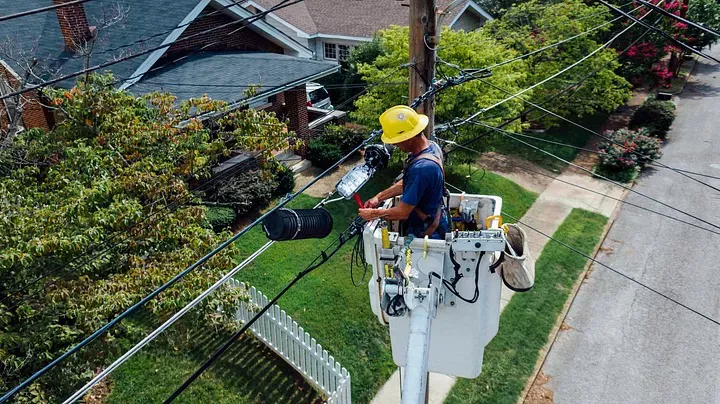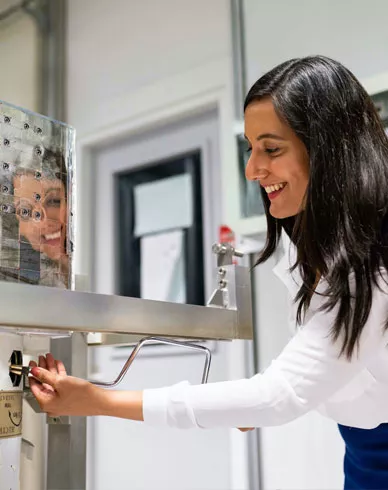The dawning era of generative AI

As we stand at the precipice of the fourth industrial revolution, artificial intelligence (AI) continues to solidify its position as a key driver of this paradigm shift. With the advent of generative AI, the possibilities seem boundless.
Analogous to the profound impact the internet had on our lives at the turn of the century, generative AI is poised to bring an equal — if not greater — transformation in the way we live and conduct business. This blog post explores the potential adoption of generative AI in highly regulated industries, comparing its potential trajectory with other significant technological breakthroughs of the last century.
Understanding generative AI
At its core, generative AI is a subset of AI that allows machines to learn from data and generate new data that is similar but not identical to the training data. Generative AI models (e.g., ChatGPT, Bard, Llama) are best known for their capacity to create realistic human-like text, but their capabilities extend far beyond.
There is obviously a lot of hype around generative AI, but the forecasted impacts to the global economy are significant. According to an MIT report, “the impact of generative AI on economies and enterprise will be revolutionary,” with Goldman Sachs predicting a 7% increase in global GDP due to generative AI. Goldman Sachs also predicts that two-thirds of US occupations will be affected by the technology, while the MIT report expects that the automation of half of all jobs will be accelerated by a decade.
Historical analogies: Technology adoption
Looking at past technological breakthroughs, the rate of adoption (i.e., “diffusion of innovation”) has often been influenced by factors such as ease of use, cost, perceived benefit, and regulatory environment. The personal computer, internet, and smartphones are prime examples. These technologies were adopted over a few decades, revolutionizing personal communication and business practices.
For instance, the adoption of the internet was relatively swift because of the immediate benefits it offered to businesses. Within just a decade of its commercialization, the internet had become a staple in businesses around the globe. In his book, Management Challenges for the 21st Century, the “father of modern management thinking” Peter Drucker says, “The most important, and indeed the truly unique, contribution of management in the 20th century was the fifty-fold increase in the productivity of the manual worker in manufacturing. The most important contribution management needs to make in the 21st century is similarly to increase the productivity of knowledge work and the knowledge worker.”
Generative AI will be a key contributor in that productivity increase.
Generative AI and highly regulated industries
Regulated industries often grapple with complex sets of rules, processes, and compliance requirements that can hamper the pace of technology adoption. The question thus arises: How will the adoption of generative AI look in such industries?
Let’s take the utilities sector as an example. This sector has seen slower adoption of technological innovations due to the high-stakes nature of the work, regulatory restrictions, and the critical need for stability. Additionally, financial incentives or accounting structures can prevent the investment needed to realize the benefits of AI. As stated in a report by the International Energy Agency, “Misaligned financial incentives can present a significant barrier for fully exploiting the potential of data and analytics in electricity networks. This is especially so in regulated markets where total investment in physical assets is the basis of revenues, while investments in digital technologies are not incentivised.”
Additionally, process- and safety-focused cultures within these organizations (while understandably important values) slow the adoption of new technologies. These organizations consistently display significant momentum that is difficult to overcome with new ideas.
Yet the potential benefits generative AI can bring these industries are significant. Predictive maintenance, grid optimization, personalized customer communication, and demand forecasting are a few areas where generative AI can have a substantial impact.
I expect that regulations in these industries, while typically slow to come and slower to update, will be coming soon. In some states, legislation has already been introduced. Google advocated in a recent filing to the National Telecommunications and Information Administration that “AI will present unique issues in financial services, healthcare, and other regulated industries and issue areas that will benefit from the expertise of regulators with experience in those sectors…” while arguing against a recommendation from OpenAI that a separate agency be established to govern AI.
Cloud computing: A model for generative AI adoption
In the spirit of drawing analogies from historical tech adoption, the utilities sector’s foray into cloud computing offers a particularly insightful model. Initially, the adoption of cloud computing in utilities was slow, primarily due to concerns about security, data privacy, and regulatory compliance. Accounting or financial constraints (i.e., OpEx vs. CapEx) have also stalled the adoption of cloud services.
However, over time, utility companies began to realize the benefits offered by cloud solutions, including cost reduction, increased flexibility, and improved disaster recovery. Regulations also evolved to better accommodate these new technologies, fostering an environment that balanced both the need for innovation and the demand for security and compliance.
In the words of Larry Ellison, cofounder of Oracle, “Cloud computing is not only the future of computing, but the present and the entire past of computing.” Said somewhat flippantly in 2009, this captured his skepticism around the ability of the cloud to disrupt Oracle’s model. Fast-forward to today and Oracle has 2% of the worldwide market share of cloud computing.
Following a similar trajectory, generative AI, although nascent, is poised to become a critical tool in the utilities sector’s arsenal. While the utilities and other regulated industries are unlikely to be disrupted by generative AI from a market share perspective, the productivity gains seen elsewhere will likely push AI into utilities, much like how digital transformation was pushed into healthcare through legislation.
Unique potential in highly regulated industries
While traditional AI and machine learning (ML) capabilities have brought about notable advancements in utilities and other highly regulated industries, generative AI opens up a new frontier of possibilities.
Traditional AI and ML systems are already being utilized for tasks such as predictive maintenance and grid optimization at utilities like Arizona Public Service. These systems can learn from historical data, detect patterns, and make predictions accordingly. For instance, AI systems can learn from past instances of equipment failure to predict when a similar failure might occur in the future. They can also adjust the supply of electricity based on known patterns of demand.
Generative AI, on the other hand, goes a step further. It doesn’t just learn patterns and make predictions — it creates new data and scenarios that are similar but not identical to the training data. In more advanced applications (e.g., high energy physics), it has shown to be faster and more capable than traditional Monte Carlo simulations. In the context of predictive maintenance, for instance, generative AI can simulate various unforeseen failure scenarios based on its understanding of the equipment’s operating conditions and history, facilitating more robust planning and preparedness.
For grid optimization, while traditional AI can adjust power-supply-based on-demand patterns, generative AI can create a myriad of potential demand scenarios under different conditions, thereby allowing utility providers to prepare for a wider range of situations and optimize their resources accordingly.
As Microsoft CEO Satya Nadella put it in his recent keynote address at Microsoft Build, “This relationship between economic progress and economic growth and technology has been there for a long time... [but] we don’t build just because we want economic growth… We want the life spans to go up. We want education and prosperity and standard of living to go up everywhere. That’s why we build. That’s why we innovate. That’s why technology exists. It’s not for technology’s sake, but it is for that broad impact.” In even our most regulated industries, generative AI presents an opportunity to have a profoundly positive impact on our lives.
While generative AI is still in its early stages, the potential it holds for utilities and other highly regulated industries is significant. Just as with the internet and cloud computing, we can expect initial hesitations and regulatory challenges. However, as we’ve seen with past technological breakthroughs, the path to adoption may be paved with surprising speed as businesses, governments, and society begin to understand and harness the power of generative AI.
The past is written. The future is generated.
This blog post was originally published here.


